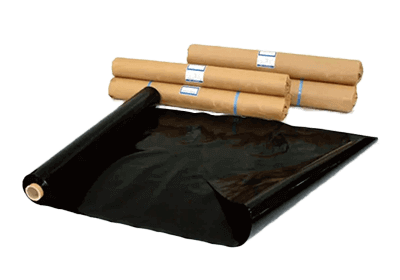Was ist ein Streugerät?
Ein Streugerät ist ein Gerät, das zum effizienten Ausbringen von Düngemitteln, Chemikalien und anderen Stoffen auf landwirtschaftlichen Flächen und Kulturen verwendet wird.
Es gibt keine klare Unterscheidung zwischen einem Sprüh- und einem Streugerät, obwohl Sprühgeräte als Geräte zum Ausbringen von Chemikalien und anderen Materialien verwendet werden und manchmal als Synonym betrachtet werden. Im Allgemeinen zerstäuben Sprühgeräte jedoch hauptsächlich Flüssigkeiten, während Streugeräte über eine Vielzahl von Methoden für unterschiedliche Anwendungen verfügen und auch Chemikalien verarbeiten können, die nicht auf Flüssigkeiten beschränkt sind.
Streugeräte können auf dem Rücken getragen werden, vor der Brust oder mit einer Schubkarre transportiert werden und es gibt verschiedene Antriebsarten einschließlich einfacher manueller, batteriebetriebener und flüssigkeitsbetriebener Typen. Größere Modelle werden von einem Traktor gezogen oder sind selbstfahrend.
Viele von ihnen sind einfach konstruiert und kostengünstig, so dass sie in einer Vielzahl von Situationen eingesetzt werden können.
Anwendungen der Streugeräte
1. Allgemeine Verwendung
Im Allgemeinen werden Streugeräte zum Ausbringen von Pestiziden, Bodenverbesserern, Düngemitteln, Herbiziden usw. auf landwirtschaftlichen Flächen verwendet. Bringen Sie einfach das zu versprühende Material und das Streugerä mit und schon können Sie loslegen.
Die Stoffe können flüssig, fest oder schlammig sein, und die zu besprühende Fläche kann groß oder klein sein. Pulverförmige Stoffe können mit einem Schlauch mit mehreren Düsen gespritzt werden, wobei manchmal zwei Personen zusammenarbeiten.
2. Andere Anwendungen
Streugeräte werden für eine Vielzahl von Zwecken eingesetzt, wobei ihre Leistungsfähigkeit ausgenutzt wird. Im Ackerbau können sie auch dazu verwendet werden, das Saatgut zu sprühen, das selbst angebaut werden soll. Beim Einsatz in Reisfeldern können sie schnell und wirtschaftlich arbeiten, ohne das Feld zu betreten.
Allerdings variiert die Streuweite je nach dem, was gespritzt wird, was die Verarbeitbarkeit je nach Form und Fläche des Ackers beeinträchtigen kann. Es ist wichtig, vor dem Einsatz die Eigenschaften des zu besprühenden Materials zu berücksichtigen.
In anderen Fällen kann die Gebläsefunktion allein verwendet werden, um relativ leichtes Material wie z. B. heruntergefallenes Laub wegzublasen, da sie ein großes Luftvolumen mit hoher Geschwindigkeit ausstoßen kann.
Funktionsweise der Streugeräte
Eine Pumpe oder ein Gebläse wird angetrieben, um den Druck auf die Flüssigkeit zu erhöhen. Das zu versprühende Material wird zusammen mit der Flüssigkeit durch eine Düse ausgestoßen, wodurch das Zielgebiet besprüht wird. Bei Flüssigkeiten kann eine vorgemischte Flüssigkeit versprüht werden, während bei Feststoffen üblicherweise die Luftmenge eingestellt wird, die in die ausgestoßene Luft fließt.
Um Feststoffe weit zu befördern, ist eine hohe Geschwindigkeit erforderlich. Und je höher die Geschwindigkeit der beiden Flüssigkeiten ist, mit denen die Feststoffe in Berührung kommen, desto weiter können sie befördert werden. Daher ist es wichtig, einen Schlauch und eine Düse mit einem Durchmesser zu verwenden, der dem zu befördernden Objekt entspricht.
Bei der Arbeit mit Streugeräten muss der Bediener die Menge des zu streuenden Materials genau kontrollieren. Er muss den zu bestreuenden Bereich, der visuell oft nicht klar erkennbar ist, gut im Blick haben. Um ein qualitativ hochwertiges Streuen ohne Schwierigkeiten bei der Bedienung zu erreichen, ist Geschicklichkeit erforderlich.
Arten von Streugeräten
Es gibt viele verschiedene Arten von Streugeräten, von kleinen bis zu großen, von Allzweck- bis zu Spezialstreugeräten, die für die unterschiedlichsten Situationen geeignet sind.
1. Rückenanbau-Streugeräte
Ein Anbaustreuer ist ein Streugerät, bei dem der Tank und der Motor integriert sind. Der Tank wird auf dem Rücken getragen. Das vom Motor angetriebene Gebläse erzeugt Wind und der Winddruck wird genutzt, um Chemikalien und andere Materialien aus den speziellen Düsen über einen großen Bereich zu verteilen.
Diese Art von Streugeräten ist am weitesten verbreitet, da sie sowohl Chemikalien als auch Düngemittel versprühen kann und die Art des versprühten Materials (Flüssigkeit, Granulat usw.) durch Auswechseln der Düsen angepasst werden kann. Es gibt verschiedene Typen, die auf einer Kombination aus Motorgröße und Tankgröße basieren.
In der Regel werden Zweitaktmotoren mit einem Hubraum zwischen 30 und 80 cm³ verwendet. Auch die Tankgrößen reichen von weniger als 10 Litern bis zu etwa 30 Litern.
Je größer der Motor ist, desto mehr wiegt er natürlich (10 kg oder mehr) und desto größer ist die körperliche Belastung. Im Gegenzug bedeutet die starke Leistung, dass längere Schläuche verwendet werden können und mit größeren Behältern kann mehr auf einmal gesprüht werden.
2. Manuelle Streugeräte
Dies sind Maschinen, die nicht mit Strom arbeiten, sondern manuell verstreuen. Wie bei den motorbetriebenen Streugeräten gibt es kleine Maschinen, die manuell ein Gebläse drehen, um pulverförmige Materialien zu streuen sowie Streugeräte, die Granulat und andere Materialien, die oben aus einem Behälter fallen, manuell auf rotierende Flügel werfen.
Beide sind leicht, da sie nicht motorisiert sind, können aber nicht viele Aufgaben erfüllen. Sie sind auf den Einsatz in kleinem Maßstab beschränkt.
